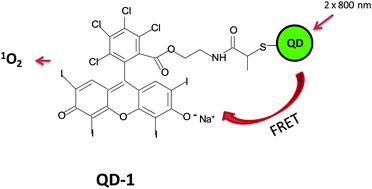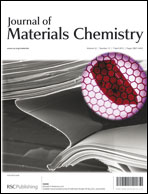In search of strategies to develop deeply penetrating agents for use in Photodynamic Therapy (PDT), we have devised a Quantum Dot-Rose Bengal conjugate that is effective at producing singlet oxygen upon two-photon irradiation. The CdSe/ZnS Quantum Dot, with its high two photon absorption cross section, serves as a two-photon absorbing antenna and transfers its excited state energy to the attached photosensitiser which engages with molecular oxygen to produce cytotoxic singlet oxygen. Thus, we were able to excite the photosensitiser indirectly, which has an absorption maximum of 565 nm, with two-photon irradiation at 800 nm. Given the tissue penetration depth of 800 nm light is at least four times greater than 565 nm light, this offers the opportunity to access much deeper-seated tumours than is currently possible with pharmaceutically approved photosensitisers. Furthermore, the attachment of the photosensitiser to the hydrophilic quantum dot improved the aqueous solubility of the photosensitiser by 48 fold, thus overcoming another limitation of currently used photosensitisers, that of poor aqueous solubility.

You have access to this article
 Please wait while we load your content...
Something went wrong. Try again?
Please wait while we load your content...
Something went wrong. Try again?


 Please wait while we load your content...
Please wait while we load your content...